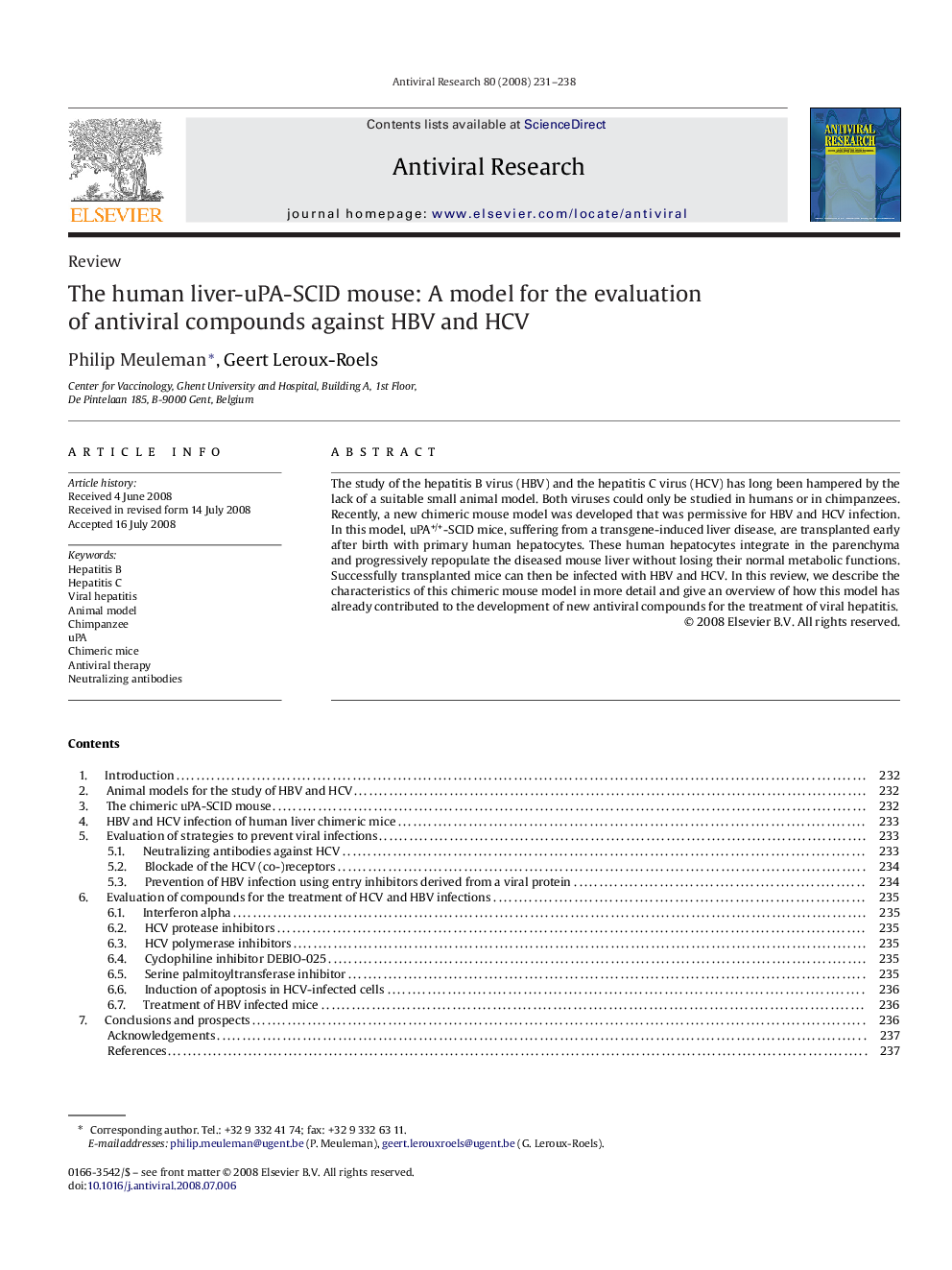| Article ID | Journal | Published Year | Pages | File Type |
|---|---|---|---|---|
| 2510992 | Antiviral Research | 2008 | 8 Pages |
The study of the hepatitis B virus (HBV) and the hepatitis C virus (HCV) has long been hampered by the lack of a suitable small animal model. Both viruses could only be studied in humans or in chimpanzees. Recently, a new chimeric mouse model was developed that was permissive for HBV and HCV infection. In this model, uPA+/+-SCID mice, suffering from a transgene-induced liver disease, are transplanted early after birth with primary human hepatocytes. These human hepatocytes integrate in the parenchyma and progressively repopulate the diseased mouse liver without losing their normal metabolic functions. Successfully transplanted mice can then be infected with HBV and HCV. In this review, we describe the characteristics of this chimeric mouse model in more detail and give an overview of how this model has already contributed to the development of new antiviral compounds for the treatment of viral hepatitis.
